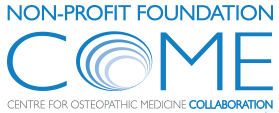Osteopathic treatment of infants with infantile colic/excessive crying: a prospective, multicentric, randomized controlled trial and nested observational trial
| By Patrick van Dun | 0 Comments
Osteopathic treatment of infants with infantile colic/excessive crying: a prospective, multicentric, randomized controlled trial and nested observational trial
Colic in infants is defined as excessive crying in an otherwise healthy and thriving baby. Colic is a common but poorly understood and often frustrating problem for caregivers. The objective of this paper is to study whether osteopathic treatments of infants with infantile colic / excessive crying (IC/EC) have an impact on the subjectively perceived psychological stress of caregivers compared to usual care … MORE







